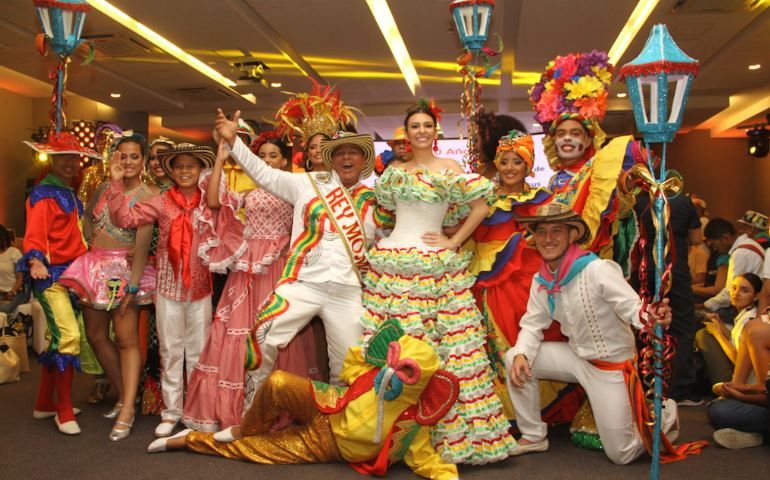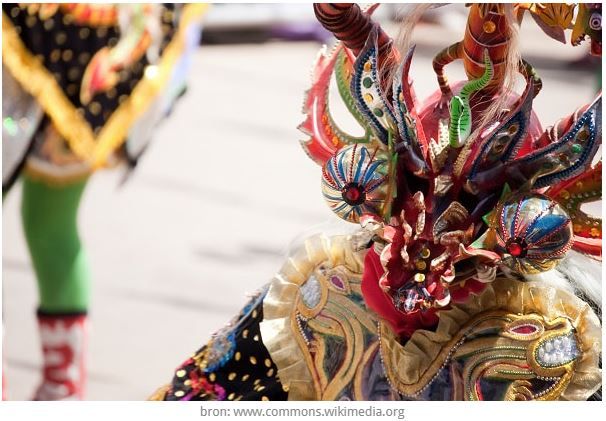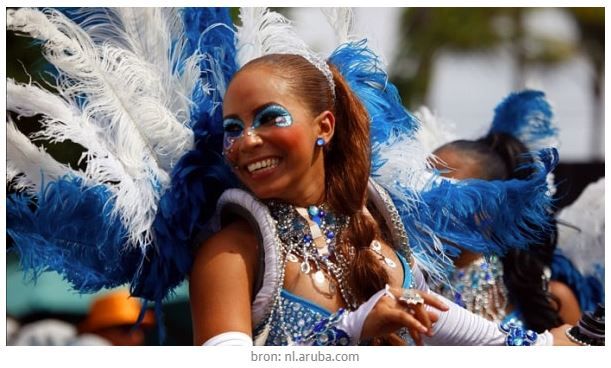3 x swinging carnival in Latin America
As a Latin America specialist based in Den Bosch, there is a festival that of course does not escape us: Carnival! For weeks the preparations for the Bossche Carnival have been in full progress here. Fow almost a week Den Bosch will be dressed in carnival atmospheres and will be named Oeteldonk. In the Netherlands these days Den Bosch is considered to be the centre of partying, music and dressed up party people. In Latin America, carnival is also fully celebrated. The carnival in Rio de Janeiro is best known, but in many other places it is just as swinging. Below we have listed three of them for you.
Carnival in Barranquilla, Colombia
Barranquilla is an important port city in the north of Colombia. Here are the roots of the singer Shakira and it is the city where the career of the famous writer Gabriel García Márquez took off. But above all, it is the city of adventurers and fortune seekers who went to Colombia to build a new life. Over the years, many cultures have melted together to create a multicultural and free atmosphere. Especially during Carnival, the largest annual festival in the country, this exuberant atmosphere is expressed.

Source: medellinguru.com/carnaval-de-barranquilla/
An explosion of music, dance and conviviality
4 days before Ash Wednesday, Barranquilla immerses itself in an explosion of music, dance, conviviality and creativity. These days, daily life comes to a complete standstill and Rey Momo Alcides Romero and the Carnival Queen of 2020, Isabella Chams Vega, are at the helm. For Colombians, Carnival de Barranquilla is the feast of festivities.
Carnival opens with the so-called 'Batalla de Flores', a large and most important parade of all. The queen of Carnival leads a great parade of colourful floats, dressed up folk groups and dressed up revellers and musicians. Together with family and friends, the Barranquillerios set out to surrender these days to the swinging sounds of cumbia, merengue, salsa or the typical Colombian vallenatos. Tuesday, the last day of the Carnival, is dedicated to 'the death of Joselito'. This symbolizes the end of all festivities. People go on the streets to bury Joselito and he will be resuscitated the Saturday of the Carnival the next year.
Carnival in Oruro, Bolivia
Every year the sleepy town of Oruro comes alive during the most famous carnival in Bolivia. For a week here, people party day and night and dance in spectacular costumes.

A special fusion of rituals
The Bolivian Carnival is a mix of the Catholic religion and indigenous Indian rituals. During the conquest by the Spaniards in the 16th century, the indigenous people of Bolivia were dedicated to the Catholic religion. In order to keep the Spaniards happy and convince them that they accepted this religion, the people made a mural of the Virgin Mary and worshipped her during a 3-day festival. However, the Spaniards did not know that this festival had the same dates as the indigenous celebration of 'Anata'. In this way the Indians could worship their own gods, like Pachamama and El Tio, without the knowledge of the Spaniards.
Over time, this has fused the Catholic faith with indigenous rituals. During the carnival and parades you can see this through music, costumes and dance. Two days before the official carnival starts, the indigenous gods are honoured. Pachamama (mother earth) is thanked for the wealth of agricultural production and El Tio, the evil uncle of the mines, is worshipped. The indigenous miners believe that El Tio is the owner of the minerals in the mine. To keep him happy, the miners leave drinks, cigarettes and coca leaves as gifts during carnival.
Magnificent costumes and devilish dances
During the three official Carnival days, the Archangel San Miguel is surrounded by symbols of the indigenous faith such as bears, pumas, monkeys and condors. The most famous and elaborate character of these days is the chief devil. With his dance and other devils on his side the devil tries to seduce San Miguel. This dance depicts the struggle between good and evil. In the end it is up to San Miguel to resist all seven sins and choose for the good.
The costumes worn during this festival are beautiful and sometimes even look a bit like the Chinese dragon costumes during the Chinese New Year celebration. Also every dance group has its own costume. For the Bolivians it is an enormous honor to walk along during a parade. The preparations start months in advance.
Carnival in San Nicolas, Aruba
If you say carnival, we say Aruba. Arubans love parties and carnival is number one. On 'One happy island' Aruba they take it very seriously and every year they go out for a whole month for this feast. So on Aruba you will be treated to a big spectacle full of colour, music and parades with dazzling costumes and dazzling floats for a month.

Jouvert morning in the dead of night
Throughout the month parades are held in several cities. One of the most talked about is probably the parade in San Nicolas, the city that is seen as the place where the carnival on Aruba originated.
The special thing about this parade is that it traditionally starts around 4 o'clock in the night. San Nicolas derives its excistence from the nearby oil refinery. To make sure that the employees of this refinery could party along after their night shift, the parade was held so early. Today, Jouvert morning, as this pyjama party is called, is considered one of the most important festivities during Carnival. Everybody comes to town in pyjamas and is ready before the big parade starts here a little later. During Carnival nothing is too crazy, let's just say.
Travel through Latin America? - And experience carnival yourself?
Would you like to travel to Latin America and experience Carnival yourself? We will be happy to create a personal, tailor-made programme for you, based on your wishes and ideas.
Do you have a question? Please do not hesitate to contact us. Send an email to info@sapapanatravel.nl or make an enquiry below.